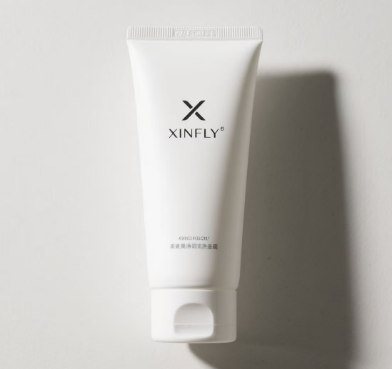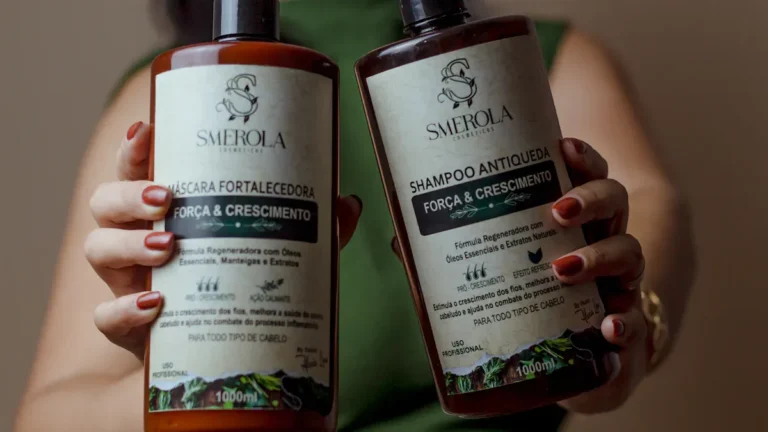How AI Design for Cosmetic Packaging Transforms Tube Design for Target Audiences by Xinfly Packaging
Ever noticed how a simple cosmetic tube can spark instant attraction—or leave you completely uninterested? Packaging is no longer just about looking pretty; it’s the handshake between a brand and its audience. In today’s hyper-competitive beauty market, personalization is the magic wand that transforms packaging from functional to emotional.
This is where AI Design for Cosmetic Packaging enters the scene. Artificial intelligence is revolutionizing how brands craft tube packaging, making it more consumer-centric, adaptive, and impactful. And at the forefront of this revolution? Xinfly Packaging—a global innovator redefining cosmetic tube design with AI-powered solutions.
Let’s take a deep dive into how AI is shaping cosmetic packaging, why personalization matters more than ever, and how Xinfly Packaging is leading the charge.

The Rise of AI in Cosmetic Packaging Design
Why Packaging Matters in the Beauty Industry
In cosmetics, packaging is storytelling. Consumers often buy products based on packaging before even trying what’s inside. With shelves (and online stores) overflowing, brands need packaging that does more than hold product—it must connect, seduce, and differentiate.
Evolution from Traditional Design to AI Integration
Traditionally, tube design was based on design instincts, consumer surveys, and trend forecasts. While effective, it lacked precision and speed. AI changed the game by analyzing massive datasets—social media trends, purchasing behaviors, even emotional responses—to craft designs that resonate instantly.
AI’s Role in Consumer-Centric Branding
AI isn’t just automating design—it’s decoding human behavior. By analyzing consumer psychology, AI can recommend colors, shapes, and even tactile finishes that match target audience desires. In other words, it transforms packaging into a mirror of consumer identity.
Understanding AI Design for Cosmetic Packaging
What Exactly Is AI Design in Packaging?
AI design involves algorithms that study consumer data, predict preferences, and generate design suggestions tailored for specific audience segments. This might mean suggesting pastel tones for Gen Z skincare lines or luxurious metallic finishes for high-end anti-aging creams.
How Algorithms Analyze Consumer Behavior for Tube Design
AI digs deep into:
- Purchase histories
- Social media engagement
- Demographics (age, income, lifestyle)
- Regional cultural aesthetics
The result? Packaging that feels like it was designed just for you.
Case Examples of AI in Action Beyond Cosmetics
Fashion uses AI for personalized clothing designs, while the food industry tailors packaging to regional taste preferences. Cosmetics are simply the latest—and arguably the most exciting—industry to embrace it.
Personalization in Cosmetic Tube Design
Why Consumers Demand Personalization in Beauty Products
Consumers want products that reflect their identity. Beauty isn’t one-size-fits-all, and neither is packaging. A personalized cosmetic tube builds trust, creates emotional resonance, and increases the likelihood of purchase.
AI-Driven Personalization vs. Traditional Marketing Approaches
Traditional packaging personalization was slow and costly, requiring manual redesigns. AI accelerates this by automating iterations and delivering data-backed designs in real time.
Micro-Segmentation: Targeting Audiences by Age, Lifestyle & Culture
AI enables brands to design one product tube in multiple variations: eco-friendly minimalist tubes for sustainability-focused millennials, or glamorous holographic finishes for Gen Z influencers. This segmentation was nearly impossible before AI.
Xinfly Packaging’s AI-Powered Approach
Who Is Xinfly Packaging?
Xinfly Packaging is a leader in cosmetic packaging solutions, specializing in innovative tube designs that merge style, functionality, and sustainability. With AI integration, they’ve redefined how brands approach packaging personalization.
How Xinfly Leverages AI for Personalized Tube Design
Xinfly uses AI to:
- Analyze consumer datasets for insights
- Generate multiple design concepts instantly
- Predict audience reactions before production
- Integrate eco-friendly materials with AI-driven sustainability insights
Benefits Clients Achieve Using AI Packaging Solutions
- Faster design cycles
- Increased sales due to higher audience connection
- Cost savings through predictive design and reduced redesigns
- Enhanced sustainability alignment
Case Study: AI-Optimized Tube Packaging for Skincare Brand X
A global skincare company partnered with Xinfly to redesign its moisturizer tubes. Using AI, Xinfly created three design options based on distinct demographics. The results? A 22% sales uplift in the first three months, with improved brand loyalty across different regions.
Brand Comparisons in AI Cosmetic Packaging
How Xinfly Packaging Stands Out vs. Global Competitors
While many competitors dabble in AI, Xinfly integrates it fully into their design workflow. This gives them speed, precision, and sustainability that others struggle to match.
Western vs. Asian AI Packaging Innovations
- Western brands focus on luxury, minimalism, and prestige.
- Asian brands, especially in K-beauty, lean toward playful, colorful, and experimental designs.
- Xinfly bridges both worlds, adapting AI packaging to global consumer tastes.
Strengths & Weaknesses of Leading AI Packaging Providers
- Strengths: Speed, personalization, cost efficiency
- Weaknesses: Over-reliance on data without creative intuition
Xinfly stands apart by balancing AI insights with human creativity.
Market Insights & Future Trends
Current Market Demand for AI Packaging
The AI packaging market is forecasted to grow exponentially as brands seek personalization and sustainable solutions. Cosmetics, with its trend-driven nature, leads this wave.
Sustainability + AI: The Future of Eco-Friendly Tube Design
AI helps optimize eco-material usage, reducing waste while enhancing visual appeal. Xinfly Packaging integrates biodegradable and recyclable materials in AI-generated designs.
Predictive Design Trends for 2025 and Beyond
Expect:
- Smart AR-enabled packaging
- AI-driven interactive designs
- Packaging that changes color or texture based on user interaction
Challenges and Ethical Considerations
Data Privacy in AI Packaging Design
Consumer personalization depends on data. Protecting that data is non-negotiable for ethical AI packaging.
Avoiding Over-Personalization Pitfalls
Too much personalization risks alienating users. The sweet spot is designing packaging that feels personal without being intrusive.
Balancing AI Efficiency with Human Creativity
AI provides data-driven insights, but design still requires the human touch. Xinfly ensures that AI complements, not replaces, creative artistry.
Case Studies: AI in Action
Luxury Cosmetics Brand – Premium Tube Personalization
A luxury brand worked with Xinfly to craft gold-embossed AI-personalized tubes for an anti-aging line. The AI insights revealed a preference for heritage-inspired packaging among older demographics.
Mass-Market Brand – Affordable AI Packaging at Scale
For a mass-market brand, AI-driven efficiency enabled tube designs that balanced affordability with visual appeal, reaching wider audiences without increasing costs.
Niche Indie Brand – Using AI to Compete with Big Players
An indie vegan beauty brand leveraged Xinfly’s AI to produce eco-friendly, minimalist tubes that resonated strongly with sustainability-conscious buyers, allowing them to compete against industry giants.
The Business Impact of AI Design for Cosmetic Packaging
Sales Uplift & ROI through Personalization
Brands using AI packaging personalization report higher conversions and repeat purchases.
AI’s Role in Reducing Design & Production Costs
Predictive AI eliminates wasted prototypes and speeds up time-to-market.
Building Stronger Consumer Loyalty
Personalized tubes create emotional connections, turning one-time buyers into lifelong customers.
Practical Guide – How Brands Can Adopt AI Packaging
Step 1: Identifying Consumer Data Sources
Start by collecting data from surveys, online interactions, and purchase patterns.
Step 2: Working with AI-Powered Packaging Partners
Partner with innovators like Xinfly Packaging, who combine AI tools with creative design expertise.
Step 3: Testing & Iterating Tube Design with AI Insights
Test multiple design variations using AI simulations before finalizing production.
Why Xinfly Packaging Is the Go-To Partner
With proven expertise, global clients, and sustainable solutions, Xinfly is the brand of choice for AI-driven cosmetic packaging.
FAQs on AI Design for Cosmetic Packaging
1. How does AI design improve cosmetic tube personalization?
By analyzing consumer data, AI suggests colors, finishes, and shapes that resonate with specific demographics.
2. Can AI packaging design adapt to cultural differences in beauty markets?
Yes. AI identifies cultural preferences, ensuring packaging aligns with local tastes.
3. Is AI packaging more expensive than traditional methods?
Initially, it may seem costly, but AI reduces redesigns, cuts waste, and increases ROI, making it cost-effective long-term.
4. How does Xinfly Packaging integrate AI into client projects?
Xinfly combines AI data analysis with design expertise, delivering personalized, sustainable, and market-ready tube designs.
5. What role does sustainability play in AI-designed cosmetic packaging?
AI optimizes material usage, promotes eco-friendly alternatives, and ensures sustainability without compromising aesthetics.
Conclusion
AI is not just a tech buzzword—it’s a creative revolution transforming how we see, feel, and connect with cosmetic packaging. With AI Design for Cosmetic Packaging, personalization has reached new heights, making tube design a direct reflection of consumer identity.
Xinfly Packaging is proving that innovation, sustainability, and personalization can coexist beautifully. For beauty brands aiming to stay ahead, the message is clear: embrace AI-powered packaging today, because the future of cosmetics will be written on tubes that truly speak to their audiences.






